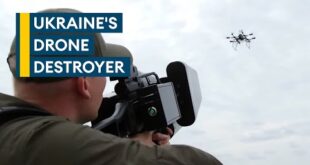Skylogic Research, the leading commercial drone industry research and advisory services firm, just announced the release of their latest research on commercial drone operations. The Economics of Using Drones for BVLOS Inspections is a white paper sponsored by PrecisionHawk, the leading provider of drone technology for the enterprise, which provides a foundation for businesses to evaluate when it’s best to use traditional ground and manned aviation, line of sight drones, or BVLOS (for “beyond visual line of site”) drone inspection approaches. It’s designed as a comprehensive primer of drone inspections in specific industries.
The paper answers questions like:
- What’s the best way to enable an effective drone strategy?
- What are the economic benefits of operating drones?
- What are the costs, benefits, and risks of using drones for BVLOS operations?
- How does that compare with traditional inspection methods?
Here is an excerpt:
As the commercial drone industry continues to evolve, widespread BVLOS drone inspection has the potential to significantly change business models for oil and gas, utilities, insurance, and other industries. Representatives we spoke with in those industries point to four main drivers motivating them to explore BVLOS operations:
- Safety, as in preventing fatal helicopter crashes or accidents from having to manually climb towers to take readings;
- Costs, or reducing dependence on a $1,500-per-rotor-hour helicopter and personnel and even cutting the time and expense of the multiple flights needed in flying drones within visual line of sight (VLOS);
- Data inconsistency and lack of quality, since manual data collection sometimes involves photos taken from a helicopter traveling at speed and at different heights for each flight—which leads to inconsistency—or hand-written notes taken while visually inspecting with binoculars—which leads to imprecise or poor quality data;
- Time to value, meaning that BVLOS flight can cover a wide area and collect high-quality data much more quickly than traditional means, so, for example, insurance claims of total loss can be indemnified faster.
The 21-page report also provides a guide for when—and how—to deploy drones to inspect assets, use cases for how drone missions compare with traditional methods, and insight from PrecisionHawk’s customers about how they’re refining their inspection strategy—and their results.
You can register to get the free report here: http://bit.ly/2Rn8z6y
https://dronelife.com/2019/01/29/evaluating-the-economics-of-bvlos-drone-operations/
 Unmanned Aerial Vehicle The latest drone news
Unmanned Aerial Vehicle The latest drone news



